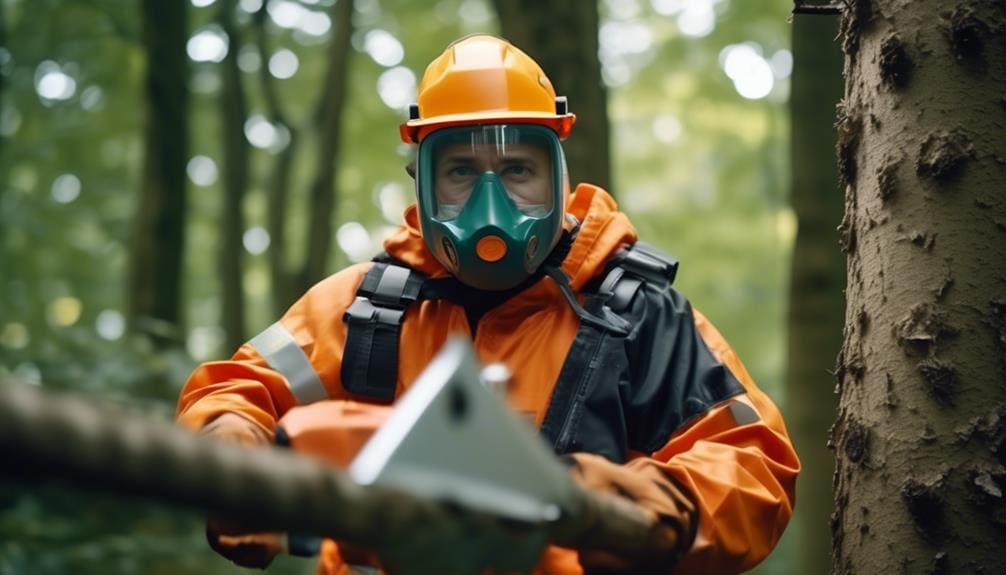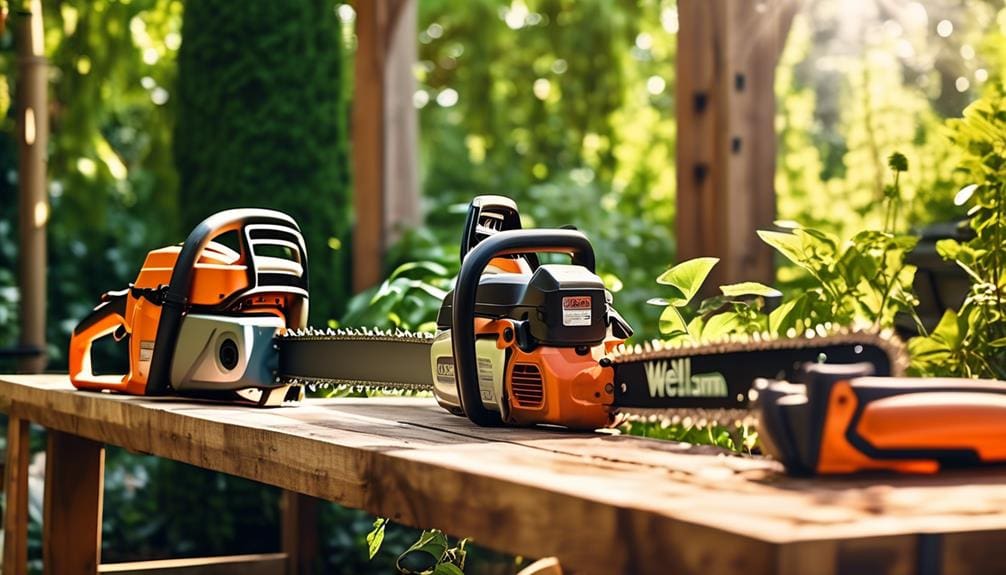Tree Health and Maintenance
Trim Trees Safely: Top 5 Tips
As we consider the widely held belief that most accidents occur during routine maintenance tasks, we’ve got to wonder if tree trimming is as safe as we assume it to be. It’s our responsibility to not only maintain the health and beauty of our trees but to also ensure we’re doing so without putting ourselves or others at risk.
We’ve gathered the top five tips for safe tree trimming, drawing from industry best practices. From assessing the need for a professional arborist to mastering safe cutting techniques, these pointers are designed to help us navigate the potential hazards.
As we prepare to explore these safety measures, keep in mind the importance of choosing the right equipment and understanding the nuances of tree biology—because there’s more at stake than just the branches we’re cutting.
Key Takeaways
- Assess the tree’s stature, health, and potential hazards before trimming.
- Choose the right personal protective equipment, including helmets, gloves, earmuffs, and chainsaw protective pants.
- Master safe cutting techniques, such as planning each cut, making initial and second cuts, and trimming judiciously.
- Prepare for potential emergencies by creating an emergency plan, having a first aid kit and emergency supplies, and familiarizing yourself with local guidelines.
Assessing the Tree and Surrounding Area
Before we trim, it’s crucial to evaluate the tree’s stature and health, as well as to identify any potential hazards within the work zone, ensuring a safe and effective pruning process. We take care to meticulously assess the tree, noting signs of damage, disease, or crossing branches that could compromise the tree’s integrity. It’s about understanding the parts of the tree that can be safely removed and those essential for its structure and health.
We’re vigilant about the surroundings, conscious of power lines or unstable ground that could pose risks. Pruning isn’t just about cutting tree branches; it’s a strategic task where we consider the tree’s natural growth patterns and species-specific needs. We aim for freedom from falling branches and mishaps, ensuring our work area remains secure and controlled.
Choosing the Right Personal Protective Equipment
Having assessed the tree and its surroundings, we must now equip ourselves with the appropriate personal protective equipment to ensure our safety throughout the trimming process.
Helmets and face shields are essential to guard against falling branches and debris, especially when using a ladder.
We’ll select heavy-duty gloves to protect our hands not just from cuts, but also from any poisonous plants we might encounter.
Earmuffs are a must to protect our ears from the roar of chainsaws and wood chippers.
Investing in chainsaw protective pants and chaps is crucial for safeguarding against sharp objects.
We can’t forget sturdy work boots to maintain a solid footing and prevent injuries.
With this gear, we’ll confidently handle pruning tools, from pole saws to shears, ensuring proper tree pruning from the branch side, near the branch collar, without compromising on freedom or safety.
Mastering Safe Cutting Techniques


To ensure a safe and effective tree trimming process, it’s essential to master cutting techniques that prioritize precision and caution.
When we’re trimming trees, we’ve got to follow tree pruning tips that safeguard both the tree’s health and our well-being.
For instance, we carefully plan each cut, starting with an initial cut on the underside of the branch. This technique prevents the bark from tearing.
We then make a second cut a few inches from the trunk, ensuring we’re careful not to cut into the branch collar.
It’s crucial to trim branches judiciously, avoiding any damage to the main trunk.
Preparing for Potential Emergencies
While we focus on honing our cutting skills, it’s equally critical to prepare for any emergencies that may arise during tree trimming activities. We must create a robust emergency plan, including contacts for arborists and emergency services. It’s essential to have a first aid kit and emergency supplies ready in case we encounter accidents while trimming branches, removing broken branches, or addressing diseased branches.
We’ll educate ourselves on the risks of pruning, especially near the stem collar or swollen areas on deciduous trees that could indicate underlying issues. Ensuring good air circulation is vital but we must also regularly inspect trees for signs of trouble. Being familiar with local emergency guidelines empowers us to act freely yet responsibly when faced with the unexpected.
Regular Maintenance of Equipment


Ensuring the longevity and safety of our equipment is a top priority. We rigorously inspect and maintain each tool according to the manufacturer’s recommendations.
It’s especially important to maintain our equipment during the best time to prune trees, which falls between early and late winter. Regular maintenance is non-negotiable to ensure we’re ready for the pruning season.
To prevent wear and tear, we keep our tools clean and well-lubricated. This is key to maintaining their efficiency and safety during pruning. Prompt replacement of worn-out parts and dull blades is crucial for guaranteeing efficient and safe operation.
We are detail-oriented when it comes to storing our equipment. Proper storage safeguards it from damage and corrosion, ensuring its longevity.
These tips are not just suggestions; they are the backbone of our practice. They offer us the freedom to work confidently and safely on any tree.
Conclusion
In conclusion, we can’t stress enough the importance of safety in tree trimming.
By assessing risks, donning the right gear, mastering cutting techniques, preparing for emergencies, and keeping our equipment in top shape, we ensure our protection and efficiency.
Let’s always prioritize safety, seek professional help when needed, and handle each task with the utmost care.
Remember, safe tree trimming isn’t just about the trees—it’s about keeping everyone around them secure as well.


Hello there! I’m Logan Foster, the green-thumbed social media marketer behind the vibrant world of 1800TreeGuy.com. With roots firmly planted in arboriculture, I’ve branched out to help clients cultivate their dream outdoor spaces, one leafy canopy at a time. My knack for nurturing nature is more than a profession—it’s a way of life.
When I’m not talking trees and teaching the art of arboreal care, you can find me cheering on the Bulldogs—my alma mater’s pride and my forever team. My environmental studies there didn’t just teach me about ecosystems; they instilled a lifelong passion for protecting our planet.
Off the clock, I’m an adventurer at heart. Whether it’s trekking the Appalachian trails, pedaling down a mountain path, or crafting guides to share the wonders of the wild, I’m happiest with soil under my nails and the sun on my face. And let’s not forget Yoda, my pug sidekick. He may not have mastered the art of stillness, but his joyful grins are my daily dose of happiness.
I’m all about making connections—between people and the great outdoors and between my clients and their ideal landscape visions. My approach is personal; every tree has a story, and every garden reflects its caretaker.
If you want to green your scene or share in my outdoor escapades, give me a shout on Instagram or Facebook. Let’s cultivate a conversation and grow a community rooted in a love for the lush life.














